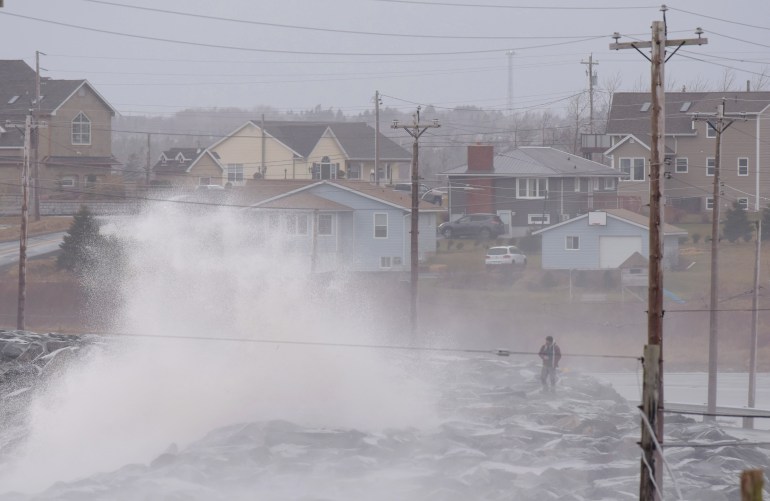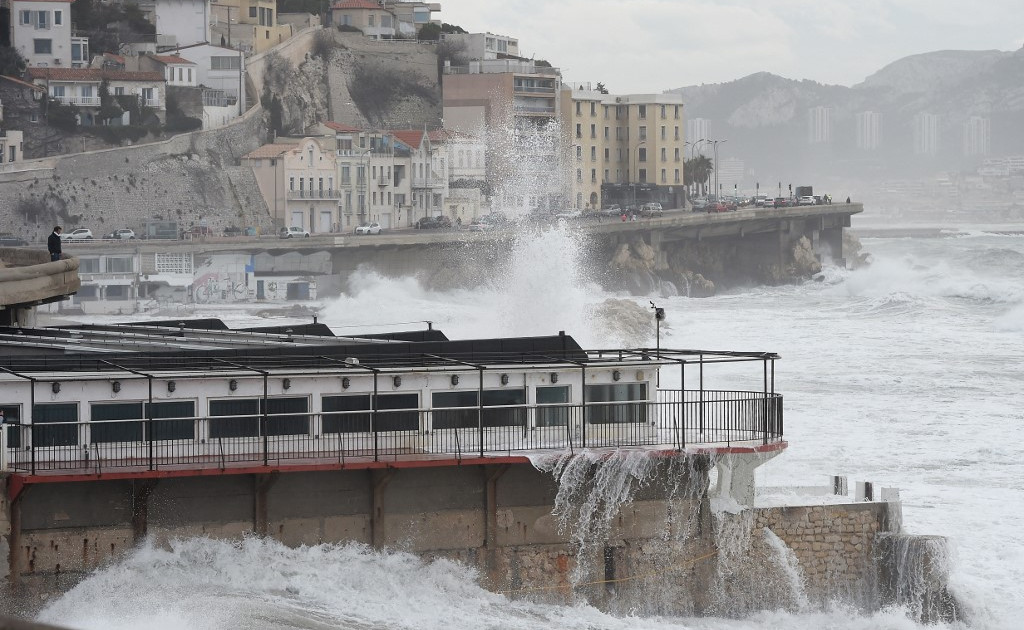Scientists warn of catastrophic consequences if AMOC system, which influences weather worldwide, collapses.
The Atlantic Ocean’s current system, an engine of the Northern Hemisphere’s climate, could be weakening due to climate change, which could have severe consequences for the world’s weather including “extreme cold” in Europe and parts of North America and rising sea levels in parts of the United States, according to a new scientific study.
The Atlantic Meridional Overturning Circulation (AMOC) is part of a large system of ocean currents, known as the Gulf Stream, that transports warm water from the tropics northwards into the North Atlantic.
“The loss of dynamical stability would imply that the AMOC has approached its critical threshold, beyond which a substantial and in practice likely irreversible transition to the weak mode could occur,” said Niklas Boers at the Potsdam Institute for Climate Impact Research and author of the study published on Thursday.
As the atmosphere warms due to increased greenhouse gas emissions, the surface ocean beneath retains more heat. A potential collapse of the system could have severe consequences for the world’s weather systems, according to the study.
If the AMOC collapsed, it would increase cooling in the Northern Hemisphere, contribute to rising sea levels in the Atlantic, an overall fall in precipitation over Europe and North America and a shift in monsoons in South America and Africa, Britain’s Meteorological or Met Office warned.
In April, the United Nations had warned that the world is on the verge of climate crisis “abyss”, as Secretary-General Antonio Guterres urged countries to “end our war on nature”.
Climate change has been blamed for the extreme weather conditions that has hit parts of the world in recent weeks and months – from the deadly wildfires in Turkey and Greece to the flooding in many parts of Asia including China, where more than 300 died.
Climate models have already shown that the AMOC is at its weakest in more than a 1,000 years.
However, it has not been known whether the weakening is due to a change in circulation or a loss of stability.
The study, published in the journal Nature Climate Change, said the difference is crucial.
By analysing the sea-surface temperature and salinity patterns of the Atlantic Ocean, the study said the weakening of the last century was more likely to be associated with a loss of stability. The scientists said the world should do all it could to keep emissions as low as possible.
“The findings support the assessment that the AMOC decline is not just a fluctuation or a linear response to increasing temperatures but likely means the approaching of a critical threshold beyond which the circulation system could collapse,” Boers said.
 A man stands in front of a wave as a storm surge from the Atlantic Ocean hits a break wall during Winter Storm Grayson in Cow Bay, Nova Scotia, Canada in 2018 [File: Darren Calabrese/Reuters]
A man stands in front of a wave as a storm surge from the Atlantic Ocean hits a break wall during Winter Storm Grayson in Cow Bay, Nova Scotia, Canada in 2018 [File: Darren Calabrese/Reuters]Other climate models have said the AMOC will weaken over the coming century but that a collapse before 2100 is unlikely.
A separate study published in the September 2021 edition of the Weather and Climate Extremes journal found that the increases in extreme precipitation after 1996 were caused by greenhouse gases from human activity and a warmer Atlantic Ocean, which creates stronger and more frequent hurricanes.
“Our previous work has shown that Northeast extreme precipitation has increased dramatically over the past 25 years, but this study is among the first to demonstrate that this rise is partially due to anthropogenic climate change,” lead author Huanping Huang, a postdoctoral fellow in the Climate and Ecosystem Sciences Division at Lawrence Berkeley National Laboratory, was quoted as saying by the Dartmouth College article published in the website Phys.org.
“Our results demonstrate that multidecadal variability in Atlantic sea surface temperatures, an important driver of warming in the Atlantic, alongside anthropogenic greenhouse gases and aerosols, also contributed to the increase in Northeast extreme precipitation after 1996,” Huang said.
